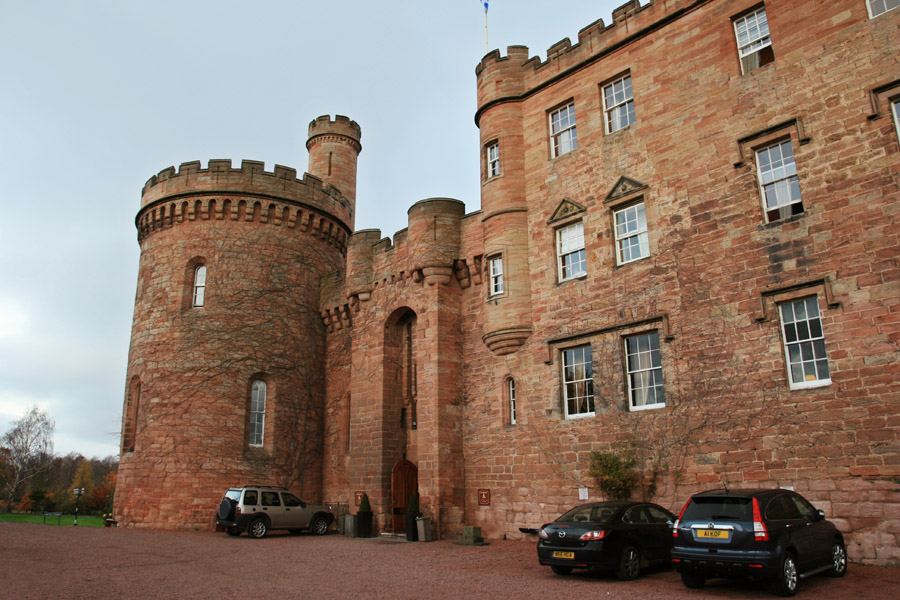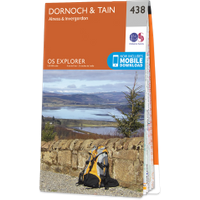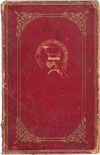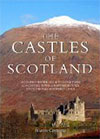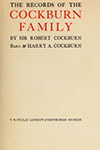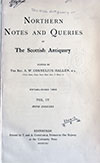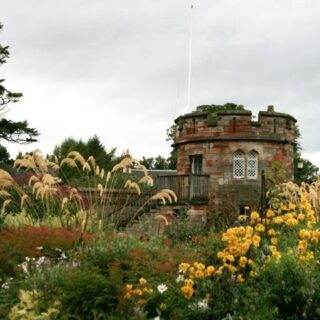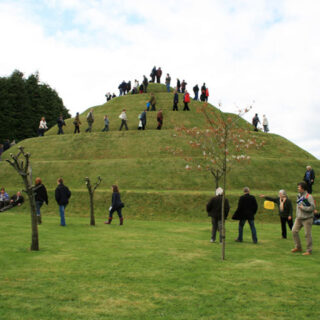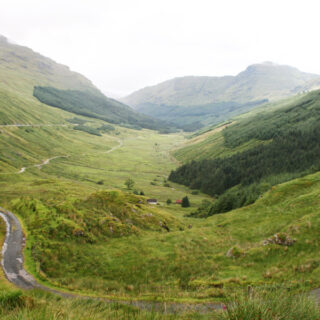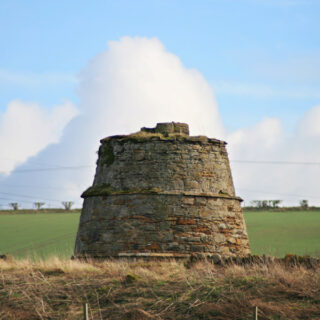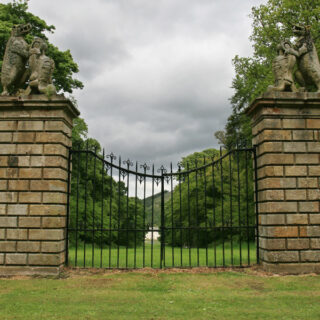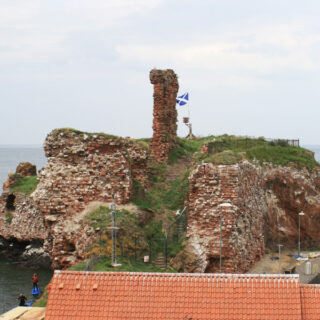

Shandwick Castle was a 15th century castle belonging to the Ross clan but nothing of it now remains.
The first castle at Shandwick is usually attributed to William Ross of Little Allan, third son of Hugh Ross of Balnagown, who is said to have built it around 1460 on land held from the bishopric of Ross. However the chapel of Standuwich is mentioned in 1225 and it’s possible that there could have been a castle here at this time too. What form the 15th century castle took is unknown.
In 1486 William was killed during the battle of Allt Charrais against the Sutherlands and was succeeded by his second son, Walter, who is described as the first of Shandwick (his father having retained the designation “of Little Allan”). Walter married five times but Janet Tulloch was the mother of his four sons including the eldest, Donald, who succeeded upon his father’s death in 1531.
The ownership of Shandwick seems to have passed to the Cairncross family for a period in the mid-16th century. A precept of clare constat was issued by John Lesley, Bishop of Ross, in May 1567 for infefting Robert Carncroce of Colmislie as heir of his father William Carncroce of Colmislie in the lands of Sandwick and fishing thereof.
Robert was the grandson of Robert Cairncross of Colmslie who was Bishop of Ross from 1539 to 1544, so it may be that the Bishop had temporarily granted lands held from the Bishop to his son, William. However in December 1567 Bishop Lesley issued a charter of confirmation by Robert Carncors in favour of Donald Ross in Sandwick and his heirs of the lands of Sandwick and their fishings, so Shandwick returned to the Ross family.
What may be a tower symbol, along with one for a settlement, is marked as Sandwyck on Pont’s late 16th century map of Tarbet Ness, Easter Ross.

Timothy Pont, c.1583 – 1614image courtesy of NLS
Donald was succeeded by his son, Andrew, who in 1603 married Beatrix Ross, widow of John Munro of Meikell Davanach. In 1612 Beatrix gave a receipt to her husband and their son, Donald, “acquyting thame of twenti bolls bere sowing in the waster pairt of Shandwick callit Auchincleiss . . . due under her contract matrimoniall.”
In 1626 Donald, with the consent of his father, sold the town and lands of Shandwick with the fishing for 3000 merks to his cousin, William Ross, Parson of Kincairdin and eldest son of Robert Ross of Keandloch. Robert was the second son of Donald’s grandfather, Donald.
William had become surety for his deceased cousin, Donald Ross of Priesthill, and in 1652 “the davach lands of Invercharrone, with Manor house, sheallings, fishings, woods, grazings, saw milne, etc thereof” were apprised from Donald’s heirs, Thomas Ross of Priesthill and his five sisters, and granted to William.
In 1663 William died and was succeeded in Shandwick by his second son, Andrew, who died in 1675. Andrew’s eldest son, also Andrew, succeeded his father but Shandwick passed to his stepmother, Lillias Dallas. In 1708 David Ross of Inverchasley and the Priesthill heiresses brought claims against Shandwick and the family lost the property to Ross of Inverchasley. Despite this family connections continued as in 1718 Andrew’s daughter, Mary Ross, married Malcolm Ross, second son of David Ross of Inverchasley and grandson of Malcolm Ross of Kindeace.
Although no longer owning the property Andrew’s son and heir, William, a Writer in Edinburgh, continued styling himself “of Shandwick” until his death by drowning, unmarried, in 1739.
By 1780 the castle was in ruins, and in 1786 David Ross of Inverchasley sold the estates of Shandwick, Culliss and Ankerville to William Ross, grandson of Andrew Ross, seventh of Shandwick, and nephew of the late William, for £17,600. William had travelled to India where he made his fortune and upon his return made a point of buying the family’s former properties.
In 1790 William Ross was killed in a duel by David Reid at Blackheath in London. David had taken the place of his brother, Andrew Reid, who had a dispute with Ross over what he deemed inappropriate attention paid to the Reid sisters. The Reid brothers’ mother, Mary Ross, was the daughter of Andrew Ross of Shandwick, William’s grandfather.
William was unmarried at his death with no immediate heir but left his properties to his nieces and their heirs. He was succeeded in Shandwick by his niece, Jean Ross, who had married John Cockburn, son of Thomas Cockburn of Rowchester, in 1786. Upon his wife’s succession Cockburn sold Rowchester in Berwickshire and moved to Shandwick.
The Cockburn Rosses began building a new house to replace the castle several kilometres to the west. Work is said to have commenced on the new house, which is now known as Old Shandwick House, in 1790 with work apparently finishing in 1805. John Cockburn Ross died at Shandwick in 1827 and two years later his wife burnt to death in Edinburgh, when they were succeeded by their son, Charles Cockburn Ross.
Charles died unmarried in 1839 and was succeeded by his aunt, Wilhelmina Ross, who died unmarried in 1849. She was succeeded by her niece, and Charles’s sister, Christina Ross, and when Christina died unmarried in 1872 “a lengthy law-suit commenced as to the succession”. Numerous claimants came forward, involving a branch of the family in Philadelphia and copies of a family tree made in 1764.
Eventually in 1876 a lawsuit to determine the succession identified Captain Andrew Gildart Reid, a descendent in the female line of William Ross of Shandwick who had repurchased the estate in 1786, as the rightful heir. Captain Reid was a grandson of Andrew Reid whose brother David had killed William Ross in the duel, but unfortunately he died without issue just before the lawsuit had been concluded. In his place his nephew, Nevile Reid, was recognised as heir.
Nevile died in 1913 and in 1936 Nevile’s son and heir, also Nevile, built New Shandwick House to replace Old Shandwick House, standing around 200m to the south-west of its predecessor. The last remains of the castle were removed in 1942 during quarrying for ballast for a nearby road, and in 1950 the younger Nevile died.
Alternative names for Shandwick Castle
Old Shandwick; Old Shandwick Castle; Sandwich; Sandwick; Sandwike; Sandwyck; Shandwich
